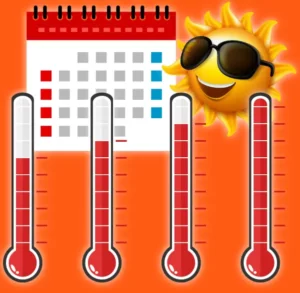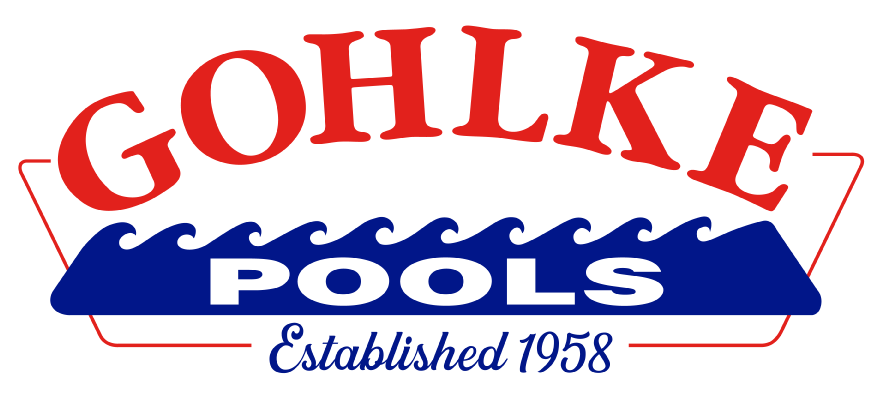90
Methods to Cool Your Pool Water & Pool Area

As of this writing (July 22nd), we have had eight days at or above 100 degrees, which is about the number that we would expect at this point on our way to our annual average of 20 days at or above 100 degrees. Although we are having some unseasonably cool weather right now, we know that it is just a matter of time before it heats up again.
Traditionally, one of the solutions to dealing with this heat is the cool enjoyment that a swimming pool can provide. That is not always possible this time of year—as pool water tends to heat up, oftentimes past the point of being refreshing. In addition, the areas around a pool can also get unbearable this time of year.
Most of us who enjoy swimming pools prefer water temperature in the range of 80-90 degrees, with temperatures below 80 and above 90 being considered uncomfortable. With the water temperature in many full-sun pools now reaching the low-90’s, pool owners are looking for ways to lower the temperature of the water and pool area.
Following are some methods that have been used to lower the temperature of their pool water:
Fountains & waterfalls—Fountains and waterfalls lower the water temperature—as the water action that is created by fountains and waterfalls causes evaporation, which cools the water. This also tends to cause more water loss due to this evaporation. Operating the fountain or waterfall at night is most effective as the air temperature is cooler. If your pool is not equipped with a fountain or waterfall, aftermarket fountains are available that attach to the pool return.
Ice—Ice can also cool a pool, but it is really not a practical method of cooling pool water—as it takes an excessive amount of ice and the change is only temporary. According to an article in the Wall Street Journal, it would take 8,750 pounds of ice to lower the water temperature of a 20,000 gallon pool by 10 degrees. These numbers are fairly consistent with research done by Mythbusters—so you can see that ice is not a sensible method of cooling the water.
Drain & refill—A partial drain and refill of your pool water is another option, depending on your water source. This method definitely works, especially if your water source is from a well, as well water is typically much cooler this time of year than surface water. Denton and most other large municipalities in the north Texas area depend on surface water (lake water) as opposed to well water, but most water sources for pools outside of these municipalities are well water, making this option something to consider. One factor to consider before implementing this strategy is that you will have to rebalance your water chemistry, and also the fact that it is wasteful.
Shade the pool—Although it will not help you this summer, consider planting some trees around the pool, especially on the west side of the pool. But remember, if you choose deciduous trees, you will be cleaning leaves out of the pool in the fall. This reminds me of the Chinese proverb—“The best time to plant a tree was 20 years ago. The second best time is now.” A faster method to get shade is by using shade sails, umbrellas, or some type of shade structure over the pool.
Reversible heat pumps—Reversible heat pumps will either heat or cool pool water with the flip of a switch. Although they are fairly expensive and consume a considerable amount of electrical power to operate, they are effective when it comes to cooling pool water. Heat pumps are typically in the $8,000-$10,000 range (including materials and labor to install). Please note that heat pumps typically require 50-amp electrical service, and some homes do not have that capability with their current service.
Evaporative coolers—Evaporative coolers use evaporation to lower the temperature of your pool water. They are considerably less costly to purchase and operate than a heat pump, but they are not capable of being used as a heater in the winter as a heat pump is. They have been used in the Denton area in the last few years. Although there are many variables that alter the effectiveness of evaporative coolers (such as size of the cooler, pool size, ambient temperature, & humidity), oftentimes 5-10 degree temperature drops are attained. Evaporative coolers are typically in the $5,000-$7,000 range (including materials and labor to install), but they typically do not perform as well as a reversible heat pump.
Cooling the pool area—Another method of dealing with the heat is by using portable coolers for the pool area—they are typically electric and work well for a small area. An alternative to a portable cooler is misting the backyard area, similar to what many restaurant patios are effectively doing. More information on mist cooling can be found at www.mistcooling.com.
As you can tell, there are quite a few options available for making the pool and pool area more comfortable, some more practical than others. If you are interested in receiving a free evaluation & estimate on the installation of either a reversible heat pump or evaporative cooler, give us a call at (940)384-7665.
Matt has been around the pool business since he was born. When he graduated college in 1984, he joined the family business working for Gohlke Pool Supply. The following year Matt and his father formed a partnership, Gohlke Custom Pools, and started offering pool construction.





